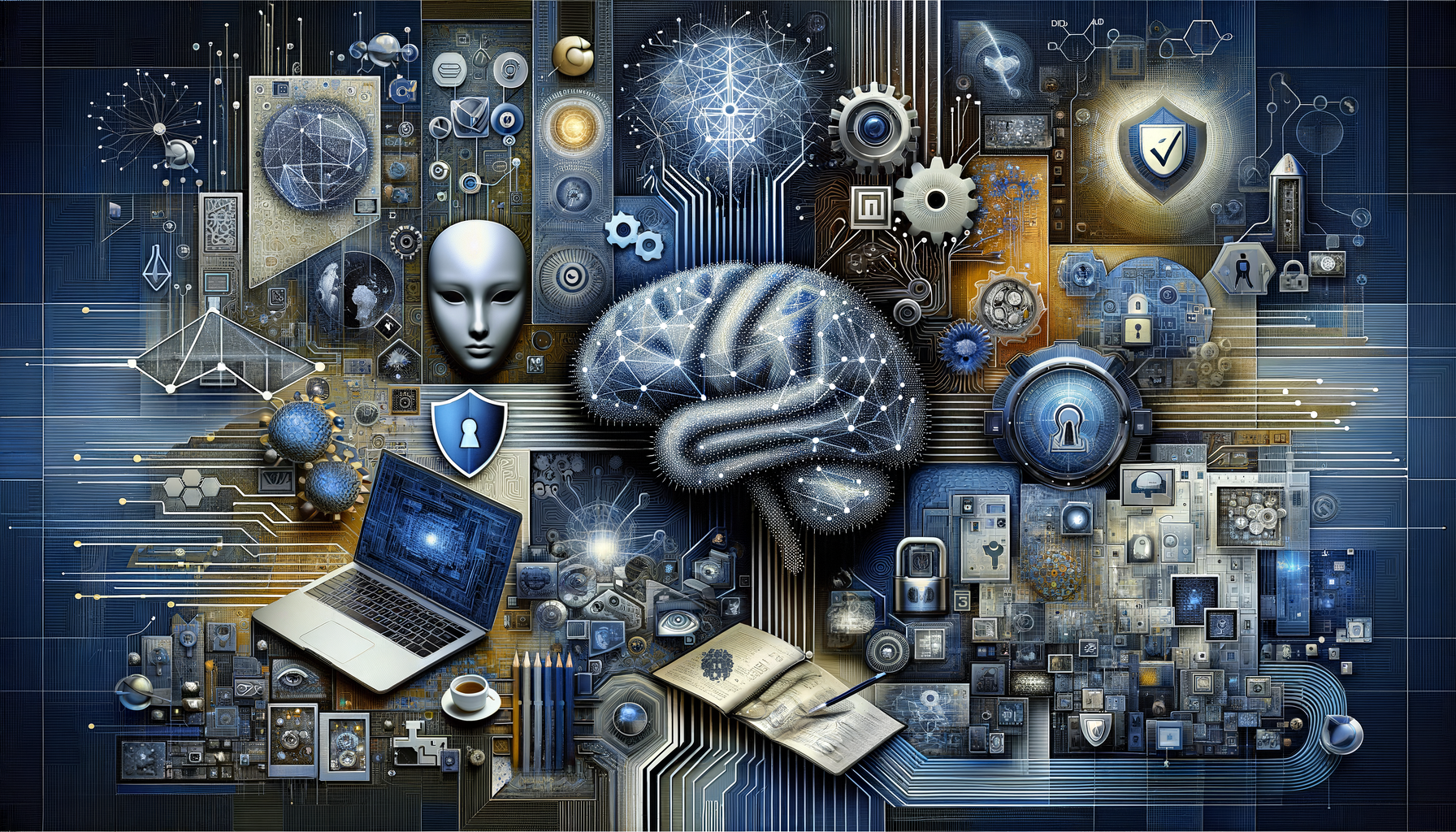The Role of AI in Cybersecurity
Artificial Intelligence (AI) has become a cornerstone in the field of cybersecurity, offering new ways to detect and mitigate threats. As cyber threats become more sophisticated, traditional security measures struggle to keep up. AI, with its ability to analyze vast amounts of data quickly, provides a dynamic approach to identifying potential threats. This capability is crucial in a landscape where cyberattacks can occur at any time and evolve rapidly.
AI systems excel in pattern recognition, which is essential for identifying anomalies that may indicate a security breach. By learning from historical data, AI can predict potential threats and suggest preventive measures. This proactive approach is a significant shift from the reactive methods that have dominated cybersecurity for years. Furthermore, AI’s ability to automate routine security tasks allows human experts to focus on more complex issues, enhancing overall security efficiency.
Despite its advantages, AI is not a panacea. It requires continuous monitoring and updating to remain effective against new types of threats. Additionally, the implementation of AI in cybersecurity must be carefully managed to avoid over-reliance, which can lead to vulnerabilities if the AI system fails or is compromised.
AI-Driven Threat Detection
One of the most significant contributions of AI to cybersecurity is its role in threat detection. AI algorithms can process and analyze data at a scale that is impossible for humans, identifying patterns and anomalies that might indicate a cyber threat. This capability is particularly useful in detecting zero-day vulnerabilities, which are unknown to the software vendor and can be exploited by attackers.
AI-driven threat detection systems can operate in real-time, providing immediate alerts when suspicious activities are detected. This rapid response is critical in minimizing the impact of a cyberattack. For instance, AI can identify unusual login patterns or data transfers, which may suggest a breach. By flagging these activities, security teams can investigate and respond before significant damage occurs.
However, the effectiveness of AI in threat detection depends on the quality of the data it analyzes. Poor data quality can lead to false positives or negatives, undermining the trust in AI systems. Therefore, organizations must ensure that their data collection and analysis processes are robust and reliable.
Challenges of AI in Cybersecurity
While AI offers numerous benefits in cybersecurity, it also presents several challenges that organizations must address. One of the primary concerns is the potential for AI systems to be targeted by cybercriminals. Attackers can use AI to develop more sophisticated and adaptive threats, making it harder for traditional security measures to detect and mitigate them.
Moreover, AI systems can be vulnerable to adversarial attacks, where malicious actors manipulate input data to deceive the AI. This type of attack can lead to incorrect threat assessments, allowing cybercriminals to bypass security measures. To combat this, cybersecurity teams must continuously test and update their AI systems to ensure they can withstand such attacks.
Another challenge is the ethical implications of using AI in cybersecurity. The deployment of AI systems raises questions about privacy and data protection, as these systems often require access to vast amounts of personal and sensitive information. Organizations must balance the need for security with the obligation to protect user privacy, ensuring compliance with relevant regulations and standards.
AI in Cybercrime
As AI becomes more prevalent in cybersecurity, cybercriminals have also started to harness its power to enhance their attacks. AI can be used to automate phishing attacks, generate deepfake content, or develop malware that adapts to evade detection. This dual use of AI poses a significant threat to organizations and individuals alike.
AI-driven cybercrime can be more effective and harder to detect than traditional methods. For example, AI algorithms can analyze social media profiles to craft personalized phishing emails that are more likely to deceive recipients. Similarly, AI can create realistic fake videos or audio recordings that can be used for fraud or misinformation campaigns.
To counter AI-driven cybercrime, organizations must invest in advanced security measures that can detect and mitigate these sophisticated threats. This includes using AI to fight AI, leveraging machine learning algorithms to identify and respond to AI-generated threats. Collaboration between cybersecurity experts, researchers, and policymakers is also crucial to developing strategies that address this evolving threat landscape.
Future of AI in Cybersecurity
The future of AI in cybersecurity is both promising and challenging. As AI technology continues to evolve, it will play an increasingly vital role in protecting against cyber threats. However, organizations must remain vigilant and adaptable to address the challenges that come with this technology.
In the coming years, we can expect to see AI systems becoming more integrated into cybersecurity infrastructures. These systems will likely become more autonomous, capable of making decisions and taking actions without human intervention. This shift will require organizations to rethink their cybersecurity strategies, ensuring that AI systems are transparent, accountable, and aligned with ethical standards.
Additionally, the collaboration between AI developers and cybersecurity professionals will be essential to harness the full potential of AI while mitigating its risks. By working together, these experts can develop innovative solutions that enhance security and protect against emerging threats. Ultimately, the successful integration of AI into cybersecurity will depend on a balanced approach that leverages its strengths while addressing its weaknesses.




Leave a Reply